There are so many wonderful experiences in Vietnam as a tourist these days that one could spend weeks there and never visit a war site. But I am a bit of a history buff so among many others, I was determined to visit the Citadel.
In January of 1966, President Johnson met with General Westmoreland, commander of American forces in Vietnam. Johnson asked “Wastemoreland” what the North Vietnamese would do if the wanted to truly win in South Vietnam. Westmoreland said quickly and simply “take Hue”. This was almost two years to the date before the TET offensive. Hue sits on Highway 1, the main link between the supply port of Danang and the DMZ. Therefore it was a critical city from a military standpoint. Hue is also a historically significant and sacred city to the Vietnamese people. One might think that it would have been fortified, and prepared for an attack. It was neither. When The TET offensive happened a division sized force of NVA and Viet Cong combined to quickly take the entire city. Hue is split into the new Hue, on the west banks of the Perfume River, and old Hue, comprised mainly of the Citadel, on the east side. The NVA swept in from the west and north and the Viet Cong just sort of rose out of the country side. They met with little or no opposition and quickly raised the NVA flag atop the tallest flag pole in Hue, in front of the Citadel.
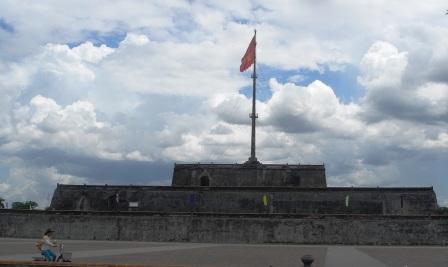
The NVA flag flew here for almost a month while the battles for Hue raged on. Now of course it is the Vietnamese flag, a red field with a yellow star.
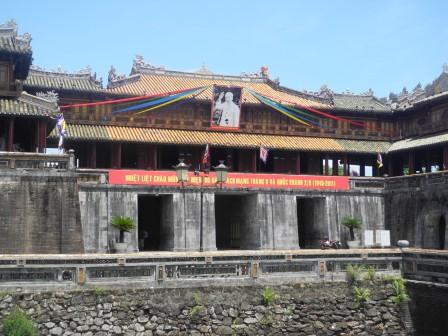
A 180 degree turn from taking that last picture and you are facing the front gate of the Citadel. The three doors are somehow significant, one for royalty only, one for poobahs and one for normal folk. The gate along with a major portion of the citadel has been rebuilt with help from international funding and the world heritage site people. Money is not the only issue, the architectural plans have not exactly survived the 1000 or more years since it was built. The rebuild is based upon old photographs mostly.
The battle for Hue went on for a month. U.S. Marines were not trained in block to block street fighting. At first there was a combination of bad weather and a desire to not destroy the culturally significant buildings which prevented the use of air power. But when losses mounted and the weather cleared, they bombed the hell out of Hue, including the Citadel which is a moat and wall enclosed area of about 5 acres filled with ancient buildings.
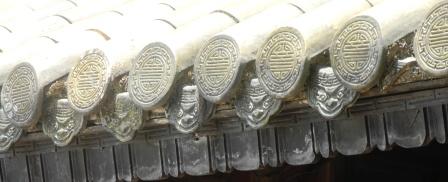
In the rebuild they are paying attention to the smallest details. This is the roof, Notice the detail.
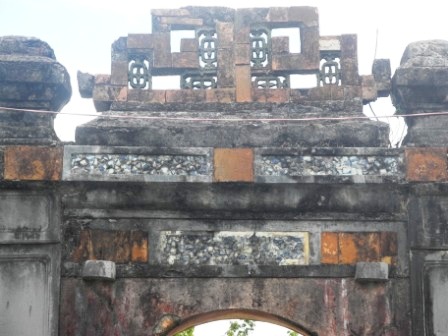
Not all the Citadel has been restored and the scars of war can still be seen. This is in the remote back section of the citadel. word is that they will get around to fixing this in a few more years.
That is it for the Citadel. There are many historical and first hand accounts of the battle for Hue on the internet and if you are a student of military history, it is worth checking out. This was the nastiest fighting the Marines ever had to do in Vietnam.
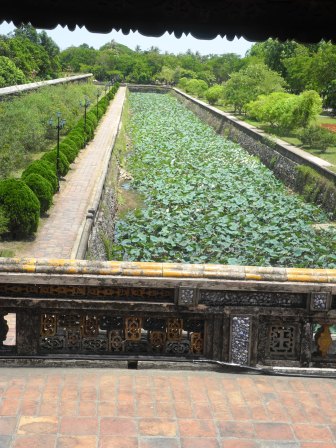
Comments